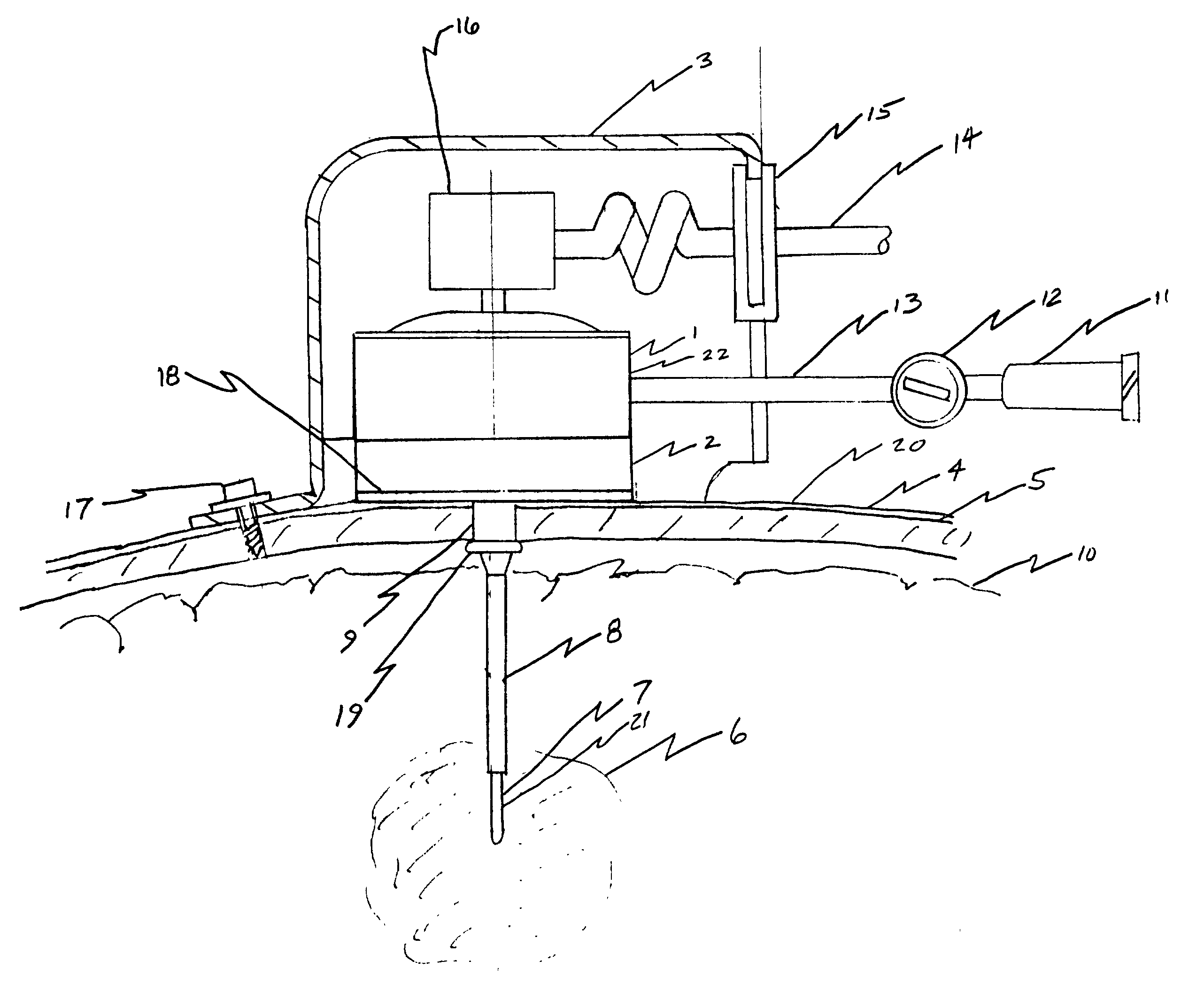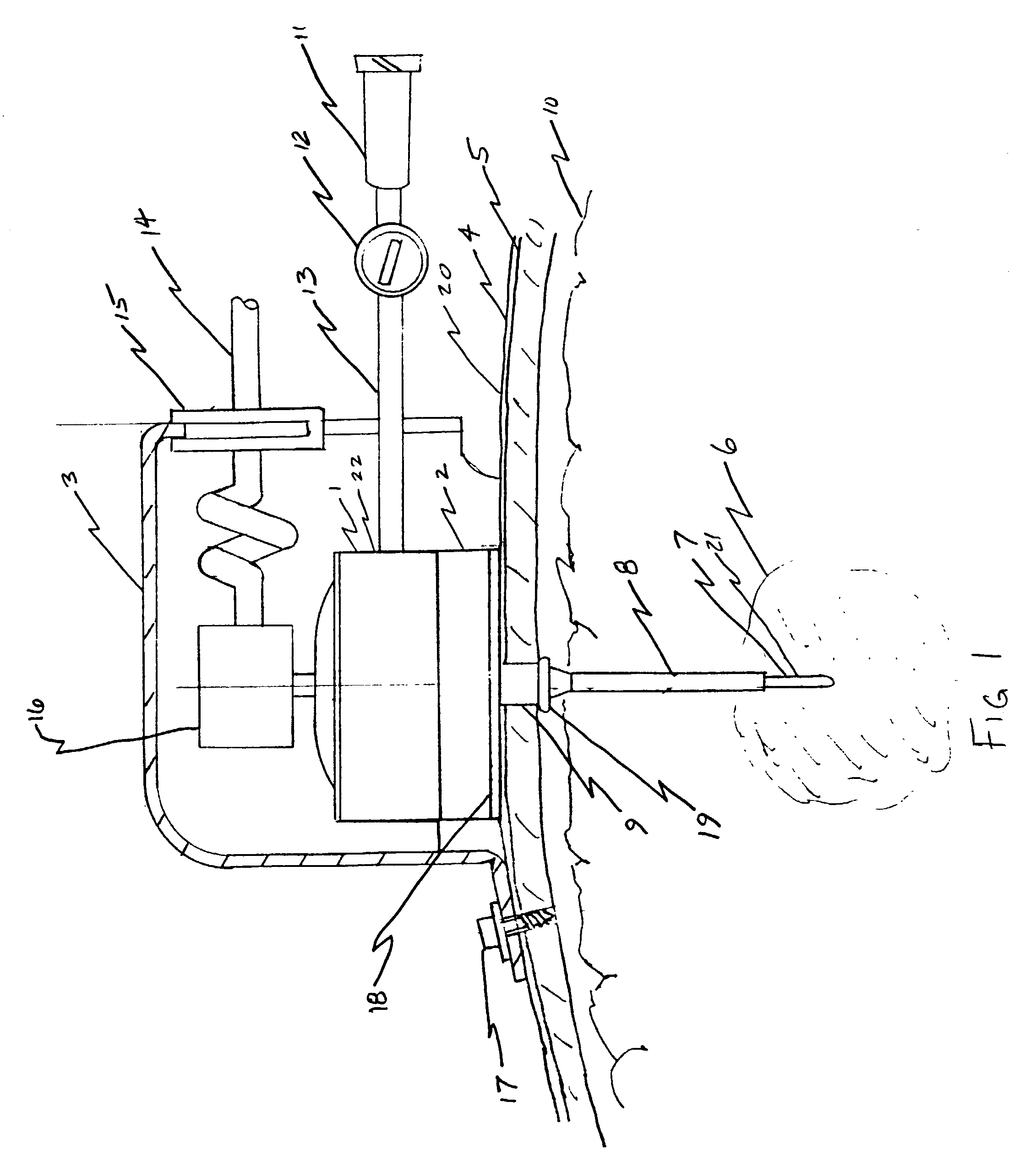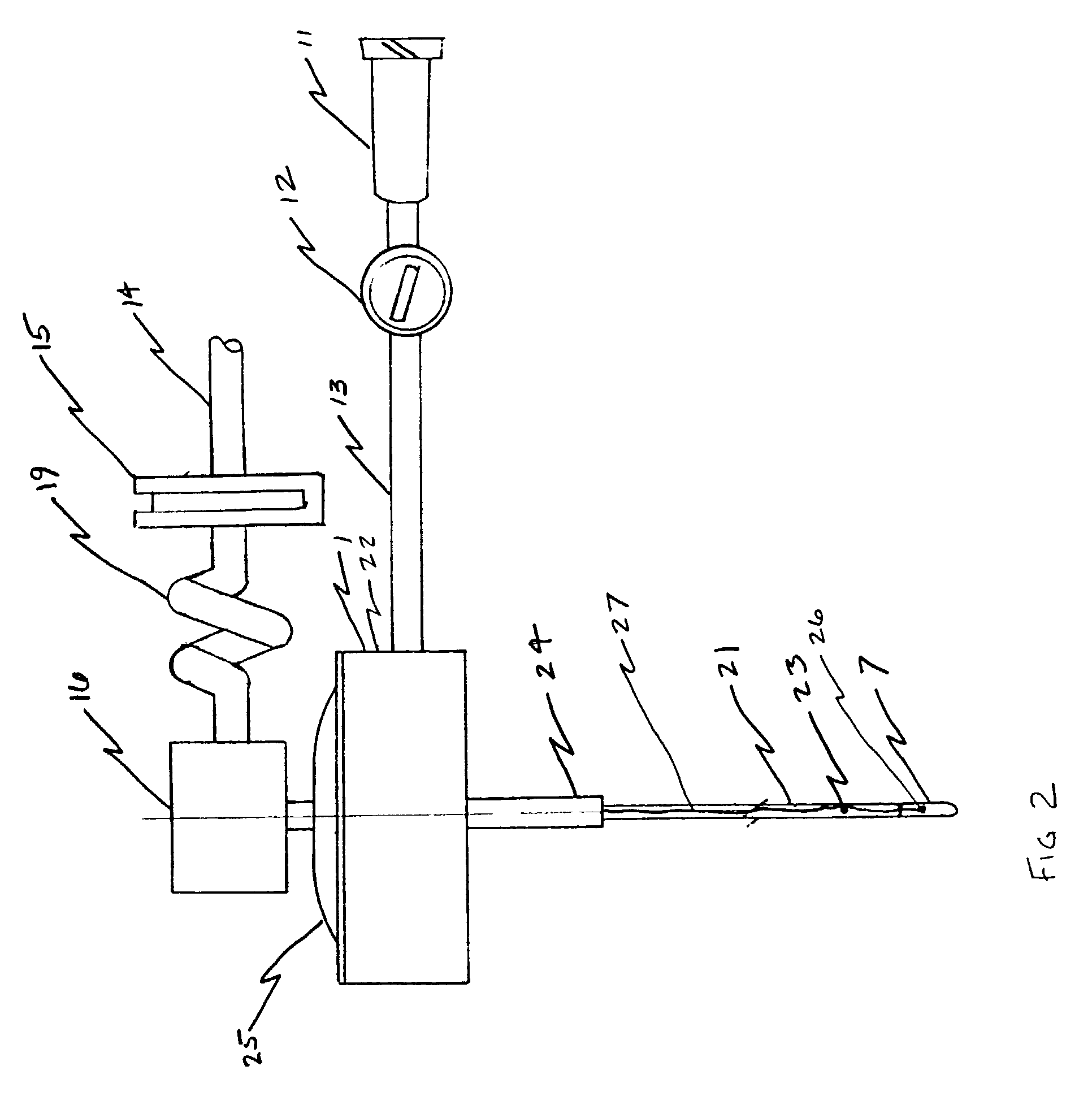Interstitial brain cooling probe and sheath apparatus
a cooling probe and interstitial brain technology, applied in the field of interstitial brain cooling probe and sheath apparatus, can solve the problems of inability to sustain sustained systemic hypothermia below 30 deg. c., inability to cure, and inability to cure, so as to achieve the effect of reducing the risk of hemorrhag
- Summary
- Abstract
- Description
- Claims
- Application Information
AI Technical Summary
Benefits of technology
Problems solved by technology
Method used
Image
Examples
Embodiment Construction
[0063]FIG. 1 depicts, in simplified form, a section of the head with an interstitial brain probe 1 and introducer sheath 2 in operational position mounted on the head 20 with the distal end of the probe 7 centered in an infarcted zone of tissue 6. The protective shield 3 covers the interstitial probe / introducer sheath assembly 1&2 and is mounted to the head 20 with self-tapping bone screws 17. The shaft of the interstitial brain probe 21 passes through the introducer sheath tube 8 and connects the distal end of the probe 7 to the interstitial probe housing 22 and the manifold assembly 16. The interstitial probe / introducer sheath 1&2 is fixated to the head by outward expansion of the fixation plug 19 against the surgically created craniotomy hole 9 in the skin 4 and skull 5. The fixating plug as 19 seals the craniotomy hole 9 and prevents infection, providing for long term indwelling (greater than 1 hour and as long as two months) of the interstitial probe / introducer sheath assembly ...
PUM
 Login to View More
Login to View More Abstract
Description
Claims
Application Information
 Login to View More
Login to View More - R&D
- Intellectual Property
- Life Sciences
- Materials
- Tech Scout
- Unparalleled Data Quality
- Higher Quality Content
- 60% Fewer Hallucinations
Browse by: Latest US Patents, China's latest patents, Technical Efficacy Thesaurus, Application Domain, Technology Topic, Popular Technical Reports.
© 2025 PatSnap. All rights reserved.Legal|Privacy policy|Modern Slavery Act Transparency Statement|Sitemap|About US| Contact US: help@patsnap.com



